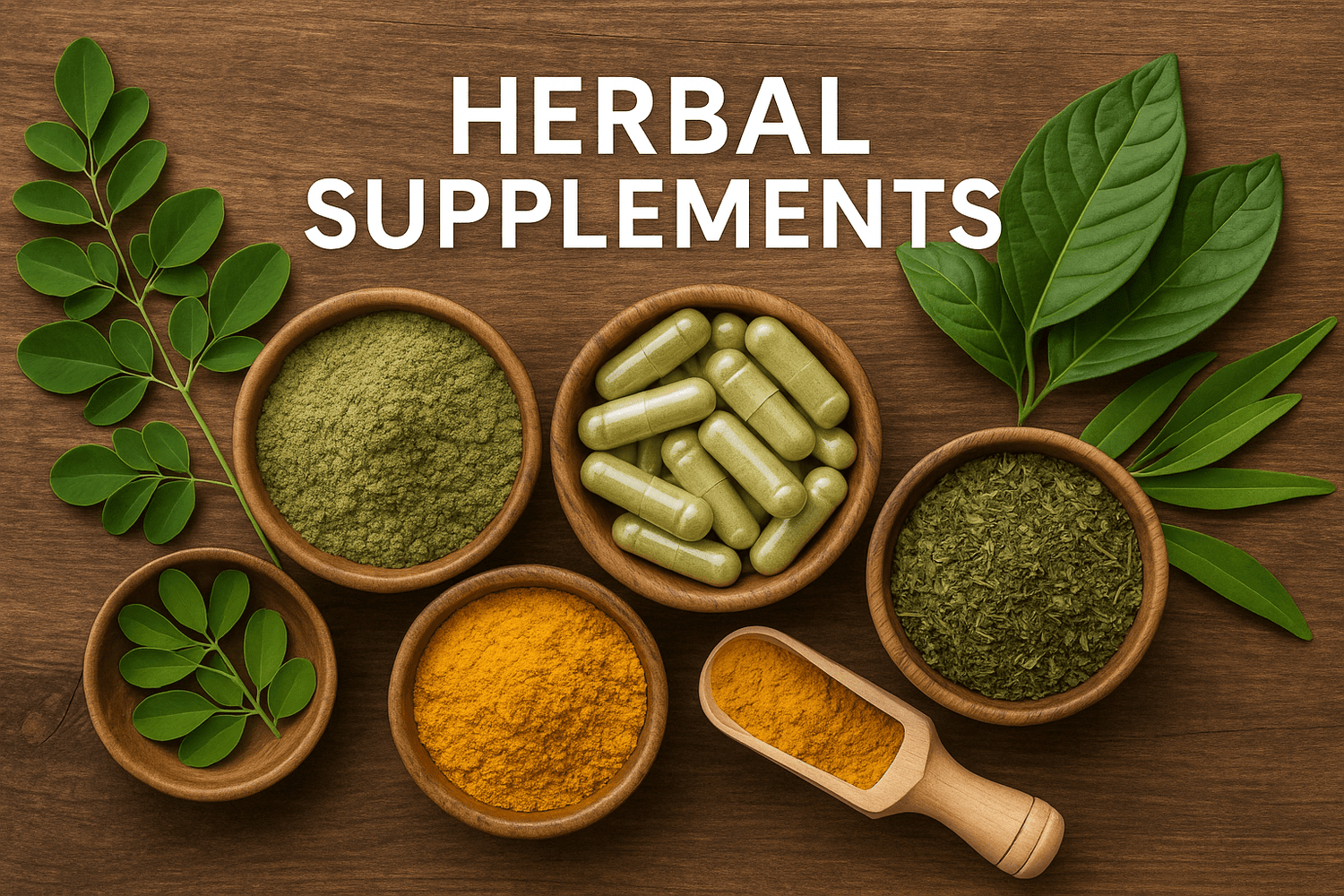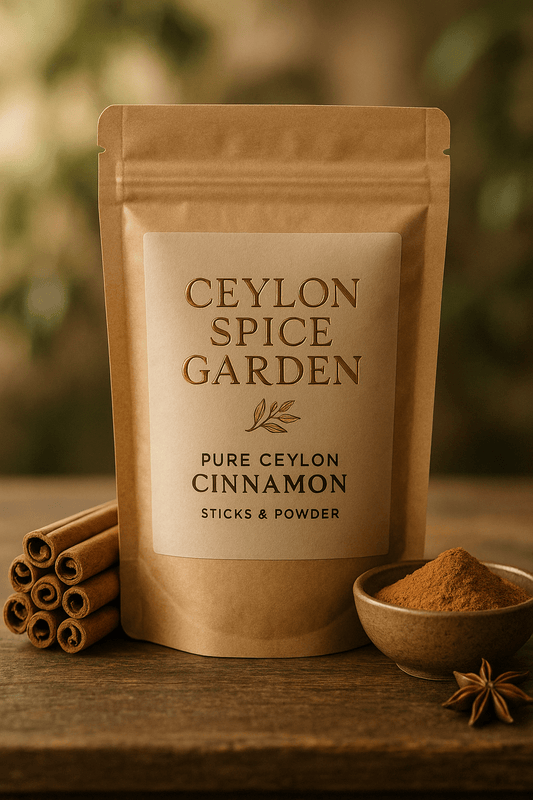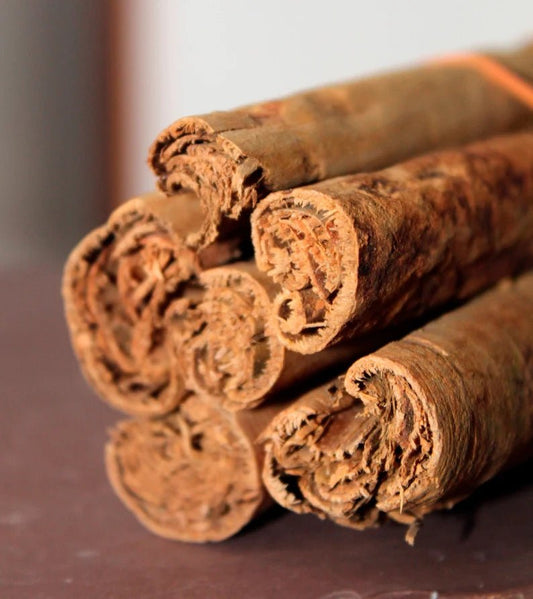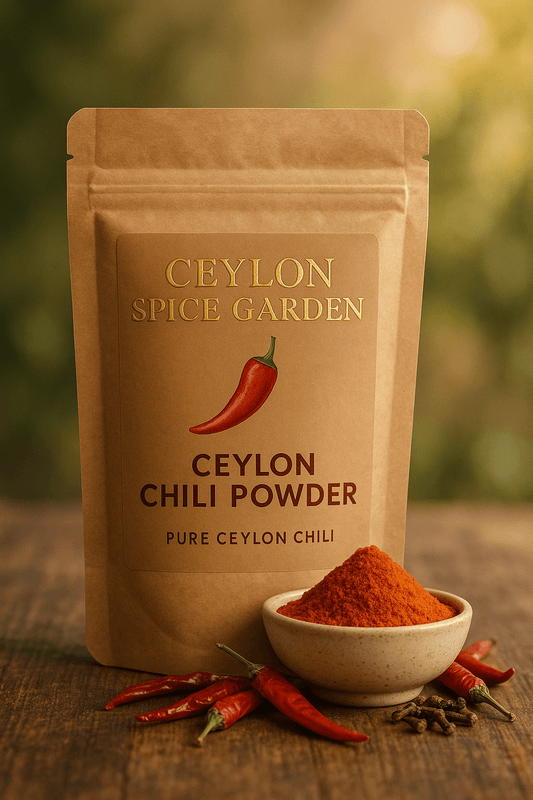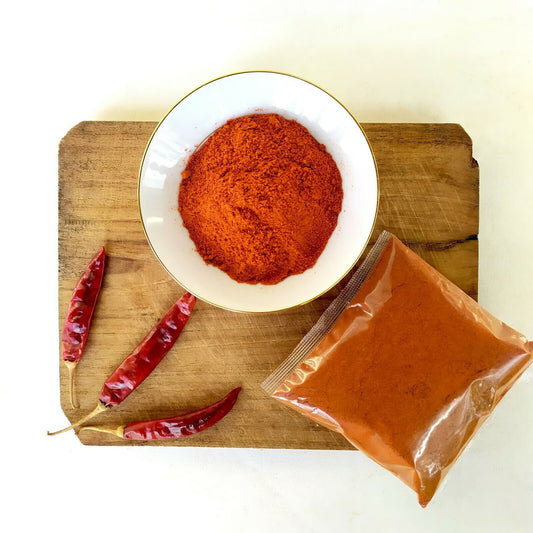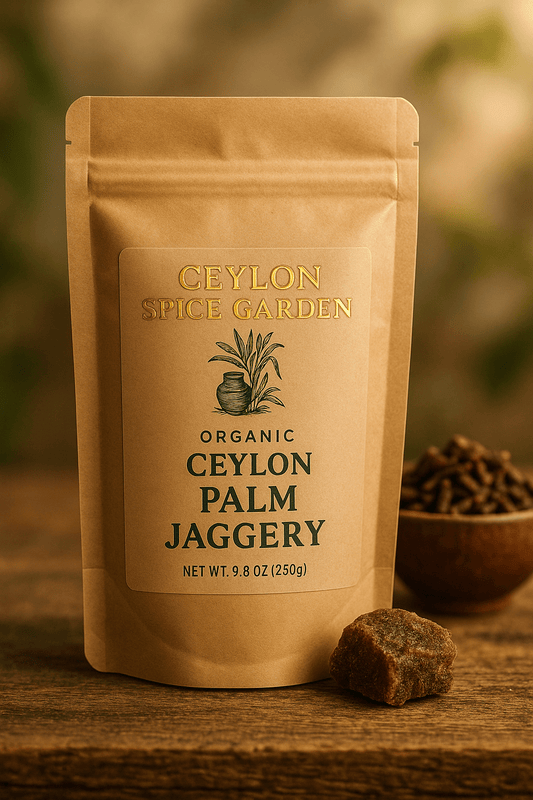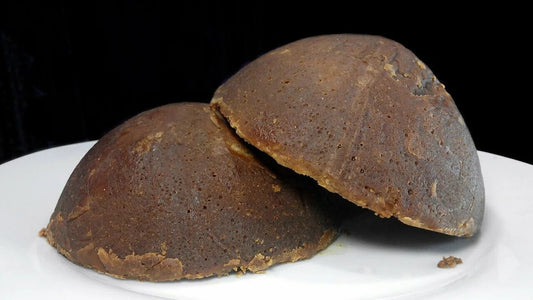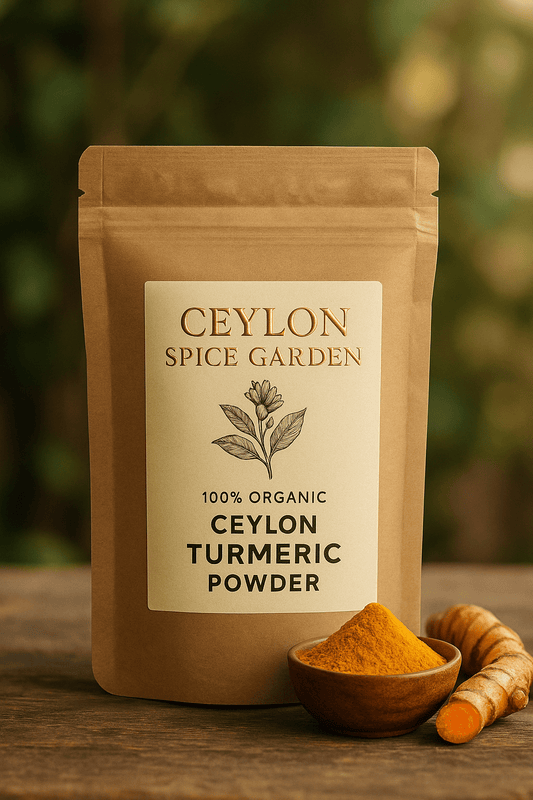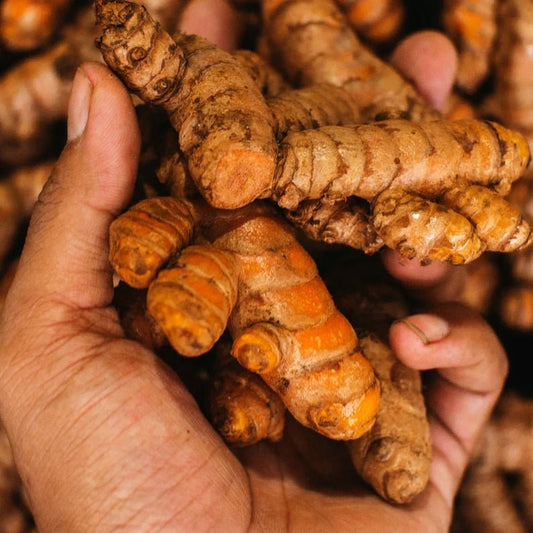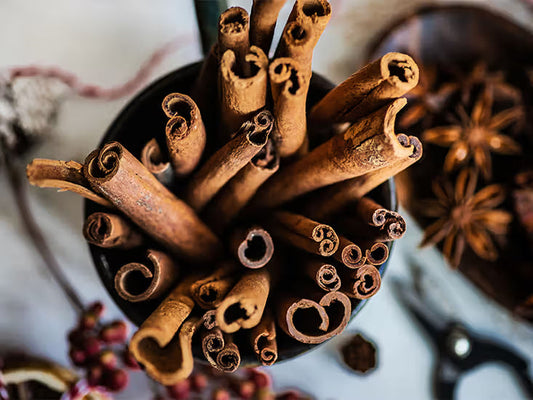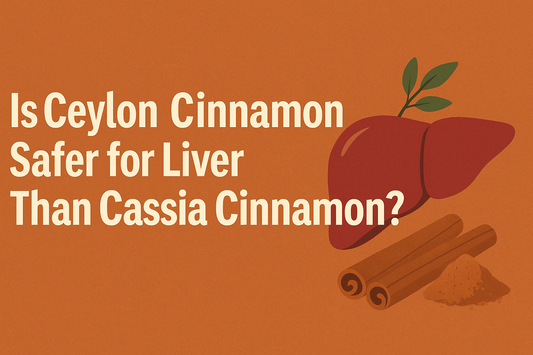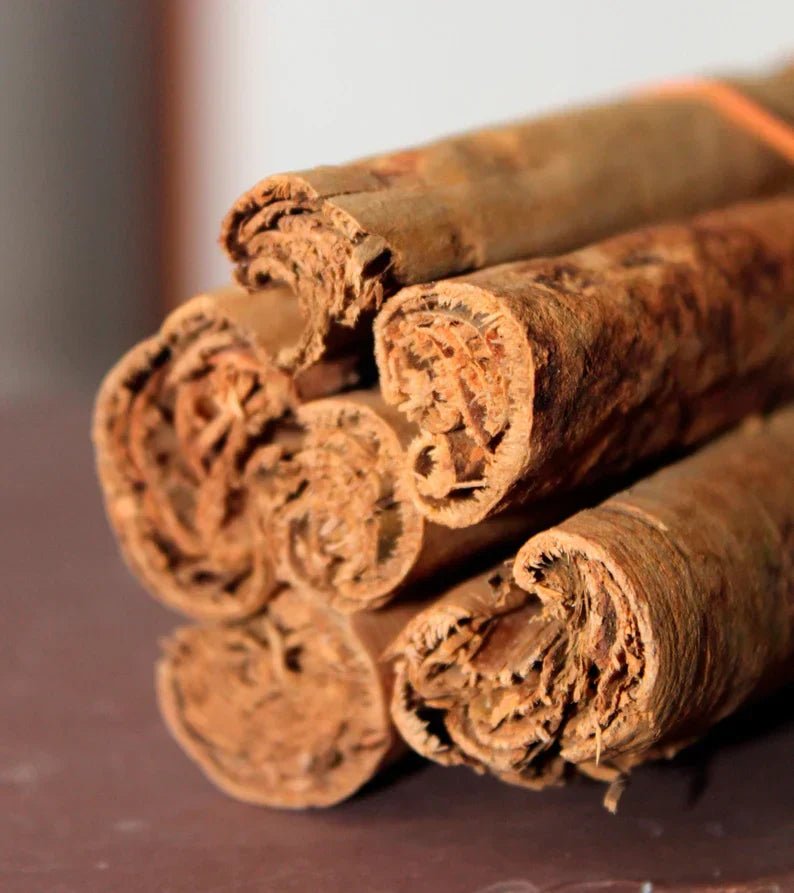
Ceylon Spices vs Indian Spices: Why Ceylon Reigns Supreme
Ceylon Spices vs Indian Spices: Why Ceylon Reigns Supreme
Table of Contents
- The Geographical Advantage of Ceylon
- Quality Standards: Ceylon vs Indian
- Flagship Ceylon Spices vs Indian Counterparts
- Traditional vs Industrial Cultivation
- Flavor Profile & Potency Comparison
- Purity and Contamination Concerns
- Health Benefits: Ceylon Advantage
- Price vs Value Analysis
- Sustainability and Ethical Sourcing
- How to Identify Authentic Ceylon Spices
- Frequently Asked Questions
The Geographical Advantage of Ceylon
Sri Lanka's unique position in the Indian Ocean creates an ideal microclimate for spice cultivation. Ceylon Spice Garden sources exclusively from these pristine growing regions where centuries of tradition meet perfect natural conditions.
According to the Food and Agriculture Organization, Sri Lanka's tropical climate with consistent rainfall and volcanic soil creates optimal conditions for spice cultivation that surpass most Indian growing regions.
Ceylon's Natural Advantages:
- Climate consistency: Year-round tropical warmth without extreme temperature variations
- Soil quality: Rich volcanic soil with perfect pH balance for spice cultivation
- Rainfall patterns: Predictable monsoons providing optimal irrigation
- Elevation diversity: Multiple microclimates from coastal to highland regions
- Isolation benefits: Island geography reduces cross-contamination and pest issues
Quality Standards: Ceylon vs Indian
The Sri Lanka Standards Institution enforces stringent quality controls that exceed international standards. Indian spice production, while large-scale, often prioritizes quantity over quality.
Ceylon Quality Control Measures:
- Mandatory testing for heavy metals and pesticide residues
- Strict moisture content regulations (typically 8-12% vs 15-20% in Indian spices)
- Essential oil content verification for authenticity
- Color and appearance standardization
- Microbiological safety testing
Flagship Ceylon Spices vs Indian Counterparts
Ceylon Cinnamon vs Indian Cassia
Ceylon Cinnamon
- Ultra-low coumarin (0.004%)
- Sweet, delicate flavor
- Multiple thin bark layers
- Light brown color
- Safe for daily consumption
Indian Cassia
- High coumarin (2-8%)
- Strong, spicy flavor
- Single thick bark roll
- Dark reddish-brown
- Limited safe dosage
As detailed in our comprehensive guide on Ceylon cinnamon vs Cassia health benefits, the difference is substantial both in safety and therapeutic value.
Ceylon Black Pepper vs Indian Black Pepper
Ceylon Black Pepper: Higher piperine content (5-9% vs 3-5%), more complex aroma with citrus notes, smaller berries with concentrated flavor. The Journal of Agricultural and Food Chemistry confirms Ceylon pepper's superior volatile oil composition.
Indian Black Pepper: Lower piperine content, more straightforward heat, larger berries with diluted flavor concentration, often mixed with other varieties.
Ceylon Cardamom vs Indian Cardamom
Ceylon Cardamom: Smaller pods, more intense eucalyptus and camphor notes, higher essential oil content (3-8%), superior flavor complexity.
Indian Cardamom: Larger pods, milder flavor, lower essential oil content (2-4%), often bleached for appearance enhancement.
Traditional vs Industrial Cultivation
Ceylon's Traditional Advantage
Ceylon spice cultivation maintains centuries-old traditions that prioritize quality over quantity. Small family farms use sustainable practices, hand-harvesting, and natural processing methods that preserve the spices' full therapeutic potential.
Key Cultivation Differences:
| Aspect | Ceylon Method | Indian Method |
|---|---|---|
| Farm Size | Small family farms (1-5 acres) | Large industrial plantations |
| Harvesting | Hand-picked at optimal ripeness | Machine harvested for efficiency |
| Processing | Traditional sun-drying methods | Industrial drying and processing |
| Chemical Use | Minimal to no synthetic chemicals | Regular pesticide and fertilizer use |
| Quality Focus | Flavor and potency priority | Volume and cost efficiency |
Flavor Profile & Potency Comparison
Research from the Journal of Food Science and Technology demonstrates that Ceylon spices consistently show 20-40% higher essential oil content compared to Indian varieties.
Why Ceylon Spices Are More Potent:
- Higher essential oil concentration: Slower growth in ideal conditions concentrates flavors
- Optimal harvesting timing: Hand-picking ensures peak potency capture
- Traditional processing: Gentle methods preserve volatile compounds
- Minimal adulteration: Pure spices without fillers or additives
- Fresher supply chain: Shorter time from harvest to consumer
Flavor Profile Advantages:
- Ceylon Cinnamon: Sweet, woody, and complex vs. Cassia's one-dimensional heat
- Ceylon Pepper: Bright, fruity heat with citrus notes vs. simple pungency
- Ceylon Cardamom: Intense, multi-layered aroma vs. mild, flat flavor
- Ceylon Cloves: Balanced eugenol content for perfect numbing without overwhelming
Purity and Contamination Concerns
A major advantage of Ceylon spices lies in their purity standards. The FDA has repeatedly issued warnings about contaminated Indian spices, while Ceylon spices maintain excellent safety records.
Common Contamination Issues in Indian Spices:
- Salmonella contamination: Poor sanitation during processing
- Heavy metal residues: Lead, cadmium, and mercury from industrial pollution
- Pesticide residues: Excessive use of banned chemicals
- Artificial coloring: Sudan dyes and other harmful colorants
- Adulteration: Mixing with cheaper materials to increase volume
Health Benefits: Ceylon Advantage
Ceylon spices offer superior health benefits due to higher concentrations of bioactive compounds and absence of harmful contaminants.
Enhanced Therapeutic Properties:
Ceylon Cinnamon Health Benefits:
- Safe for diabetics due to ultra-low coumarin content
- Higher antioxidant activity (ORAC values 25-30% higher than Cassia)
- Anti-inflammatory properties without liver toxicity risks
- Cardiovascular benefits with daily use safety
Ceylon Black Pepper Benefits:
- Higher piperine content enhances nutrient absorption
- Superior bioavailability for curcumin and other compounds
- Enhanced digestive enzyme stimulation
- More potent antimicrobial properties
Studies published in the International Journal of Molecular Sciences show that Ceylon spices deliver therapeutic benefits at lower dosages due to their superior concentration of active compounds.
Price vs Value Analysis
While Ceylon spices cost 2-5 times more than Indian alternatives, the value proposition is compelling when considering quality, safety, and potency.
| Factor | Ceylon Spices | Indian Spices | Value Winner |
|---|---|---|---|
| Initial Cost | $15-25 per oz | $3-7 per oz | Indian |
| Usage Amount | 50% less needed | Standard amount | Ceylon |
| Health Safety | Premium safety | Contamination risks | Ceylon |
| Flavor Quality | Superior complexity | Basic flavor profile | Ceylon |
| Shelf Life | 3-4 years | 1-2 years | Ceylon |
| Overall Value | High | Low to Medium | Ceylon |
Cost-Per-Use Analysis:
When factoring in the reduced quantity needed due to higher potency, Ceylon spices often cost only 50-75% more per use while delivering significantly superior results.
Sustainability and Ethical Sourcing
Ceylon's small-scale farming model promotes environmental sustainability and fair trade practices that benefit local communities.
Ceylon Sustainability Advantages
- Biodiversity preservation: Mixed-crop farming maintains ecosystem balance
- Water conservation: Natural rainfall dependence reduces irrigation needs
- Soil health: Organic practices maintain long-term soil fertility
- Fair wages: Direct trade relationships ensure farmer prosperity
- Carbon footprint: Smaller farms with traditional methods produce lower emissions
The Fairtrade Foundation recognizes Ceylon spice production as a model for sustainable agriculture that balances quality, environmental protection, and social responsibility.
How to Identify Authentic Ceylon Spices
With the premium Ceylon commands, authentication is crucial. Here's how to ensure you're getting genuine Ceylon spices:
Visual Identification:
- Ceylon Cinnamon: Light brown, thin, multi-layered quills that crumble easily
- Ceylon Pepper: Small, wrinkled berries with consistent dark color
- Ceylon Cardamom: Small, triangular pods with natural green color
- Ceylon Cloves: Uniform size, reddish-brown color, strong aroma
Documentation to Look For:
- Certificate of Origin from Sri Lanka
- Export certification from Sri Lankan authorities
- Quality testing reports showing essential oil content
- Organic certification where applicable
- Traceability information linking to specific growing regions
Trusted Sources for Authentic Ceylon Spices:
- Direct importers from Sri Lanka with established relationships
- Specialty spice retailers with certification verification
- Online stores with transparent sourcing information
- Gourmet food stores with knowledgeable staff
Culinary Applications: When Ceylon Makes the Difference
Professional chefs increasingly choose Ceylon spices for applications where quality truly matters. Research from the Institute of Food Technologists shows that Ceylon spices provide more consistent results in high-end culinary applications.
Where Ceylon Spices Excel:
Baking and Desserts: Ceylon cinnamon's sweet, delicate flavor enhances rather than overwhelms delicate pastries and desserts. Its low coumarin content makes it safe for recipes requiring larger quantities.
Fine Dining: Ceylon black pepper's complex flavor profile adds sophistication to gourmet dishes without the harsh bite of standard pepper.
Health-Conscious Cooking: Ceylon spices allow for therapeutic dosing without safety concerns, perfect for functional foods and wellness cuisine.
Beverage Applications: Ceylon cardamom and cinnamon create more refined flavor profiles in specialty teas, coffees, and cocktails.
Market Trends: The Growing Demand for Ceylon Quality
Global market trends show increasing consumer awareness of spice quality and origin. The Markets and Markets research indicates that premium spice segments are growing at 8-12% annually, driven by quality-conscious consumers.
Driving Factors for Ceylon Spice Demand:
- Health consciousness: Consumers prioritize safety and therapeutic benefits
- Culinary sophistication: Home cooks seek restaurant-quality ingredients
- Authenticity movement: Demand for traditional, unadulterated products
- Social responsibility: Preference for ethically sourced ingredients
- Quality over quantity: Willingness to pay premium for superior products
Industry Recognition
Major food corporations and celebrity chefs increasingly specify Ceylon spices in their formulations. Companies like Whole Foods, Williams Sonoma, and high-end restaurants explicitly seek Ceylon varieties for their superior quality and safety profiles.
Proper Storage and Handling of Ceylon Spices
To maximize the investment in premium Ceylon spices, proper storage is essential. Due to their higher essential oil content, Ceylon spices require careful handling to preserve their superior qualities.
Optimal Storage Conditions:
- Temperature: Cool, consistent temperatures (60-70°F ideal)
- Humidity: Low humidity environments (below 60%)
- Light: Dark storage away from direct sunlight
- Air exposure: Airtight containers to prevent oxidation
- Container material: Glass or food-grade metal containers preferred
About Ceylon Spice Garden
Ceylon Spice Garden has been the premier source for authentic Ceylon spices since 2010, working directly with Sri Lankan growers to bring you the world's finest spices. Our commitment to quality, purity, and authenticity has made us the trusted choice for chefs, health enthusiasts, and discerning home cooks worldwide. We support sustainable farming practices and fair trade relationships that benefit both our customers and the Sri Lankan spice farming communities.
The Verdict: Ceylon's Supremacy is Clear
While Indian spices dominate global markets through volume and low prices, Ceylon spices reign supreme in quality, safety, flavor, and health benefits. For those who understand the difference between good and exceptional, Ceylon spices represent the gold standard. The investment in Ceylon quality pays dividends in culinary results, health benefits, and the satisfaction of supporting sustainable, traditional agriculture. When quality matters, Ceylon spices are simply without equal.
Frequently Asked Questions
Ceylon spices are superior due to Sri Lanka's unique climate, soil conditions, traditional cultivation methods, and stricter quality standards. They offer more concentrated flavors, higher essential oil content, better purity with less contamination, and safer profiles for regular consumption. The island's isolation also reduces cross-contamination and pest issues that affect mainland spice production.
Yes, Ceylon spices typically cost 2-5 times more than Indian spices due to smaller-scale production, higher quality standards, and premium positioning. However, the investment is justified by superior flavor concentration (requiring 50% less usage), better safety profiles, longer shelf life, and enhanced health benefits. The cost-per-use difference is much smaller than the initial price difference suggests.
Ceylon cinnamon shows the most dramatic difference with ultra-low coumarin content (0.004% vs 2-8% in Indian Cassia), making it safe for daily consumption. Ceylon black pepper has higher piperine content and more complex flavor. Ceylon cardamom offers more intense, multi-layered aroma. These differences are significant enough that they're essentially different products rather than quality variations of the same spice.
Look for Certificate of Origin from Sri Lanka, check the country of origin labeling, and purchase from reputable dealers like Ceylon Spice Garden. Visual clues include Ceylon cinnamon's light brown, thin, multi-layered appearance versus Cassia's thick, dark rolls. Authentic Ceylon spices have distinctive aroma profiles and often come with quality testing documentation showing essential oil content.
Yes, Indian spices have higher rates of contamination issues including Salmonella, heavy metals (lead, cadmium), excessive pesticide residues, and artificial colorants like Sudan dyes. The FDA and CDC have issued multiple warnings about contaminated Indian spices. Ceylon's island geography, stricter export controls, and traditional farming methods significantly reduce these risks.
Yes, Ceylon spices offer superior health benefits due to higher concentrations of bioactive compounds and absence of harmful contaminants. Ceylon cinnamon is safe for diabetics and daily use, Ceylon pepper enhances nutrient absorption more effectively, and all Ceylon spices deliver therapeutic benefits at lower dosages. Studies show 20-40% higher essential oil content in Ceylon varieties compared to Indian counterparts.
Yes, but use 25-50% less Ceylon spices due to their higher potency. Ceylon cinnamon works particularly well in baking and desserts where its sweet, delicate flavor is preferred over Cassia's harsh bite. Ceylon pepper provides more complex flavor in fine dining applications. The substitution often improves the final dish quality while providing better health benefits.
Ceylon spices maintain potency longer due to higher initial essential oil content. Properly stored Ceylon cinnamon retains flavor for 3-4 years versus 1-2 years for standard cinnamon. Ceylon pepper and cardamom similarly outlast Indian varieties. Store in airtight containers in cool, dark places to maximize shelf life. The superior longevity partially offsets the higher initial cost.
